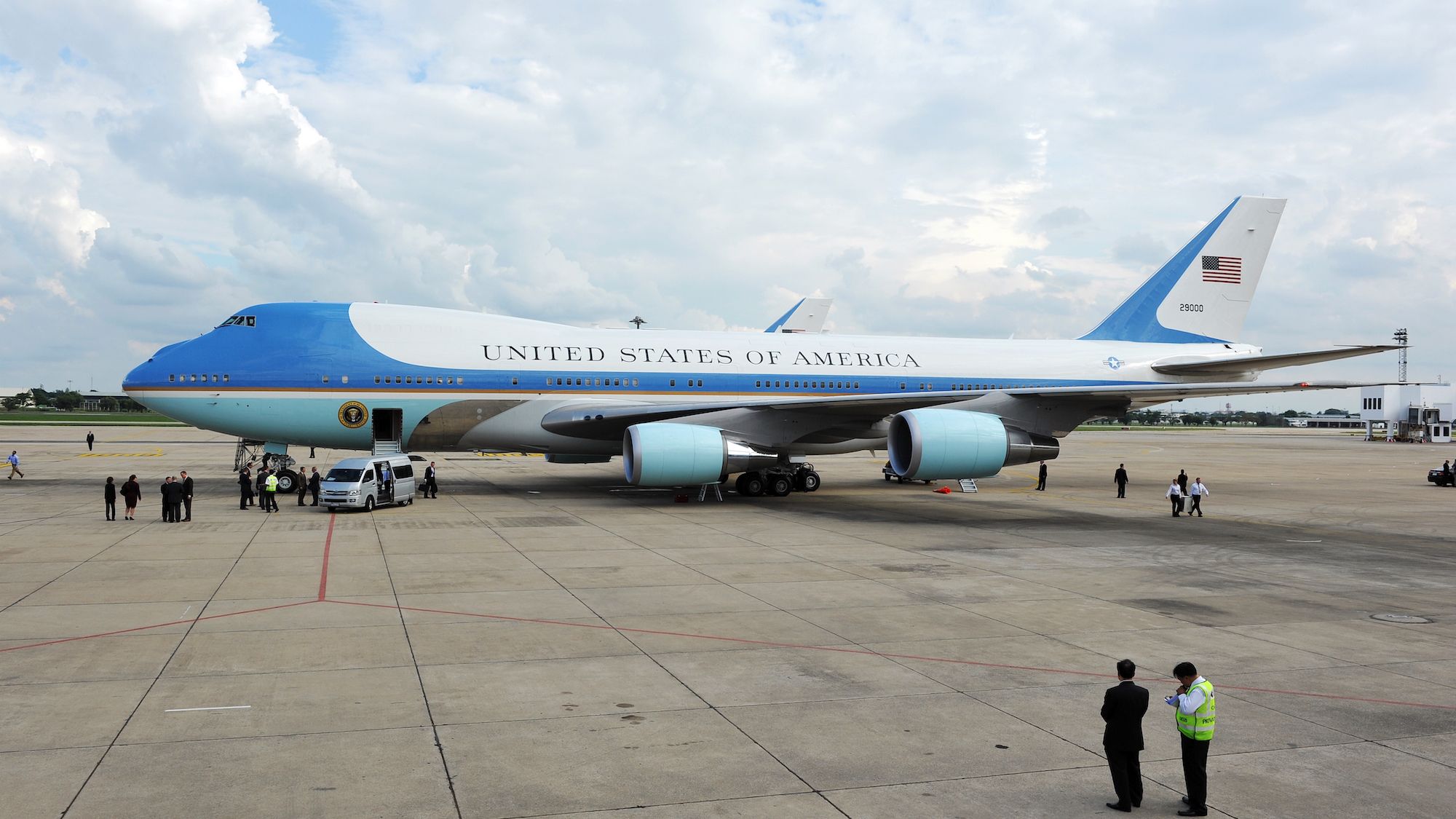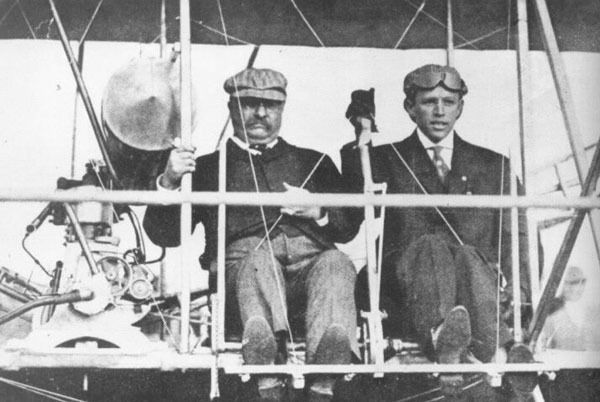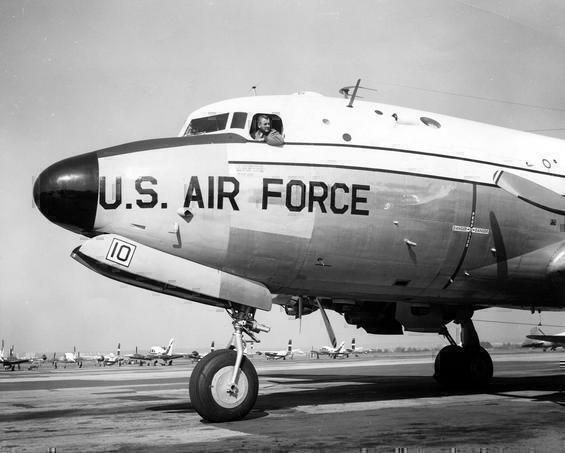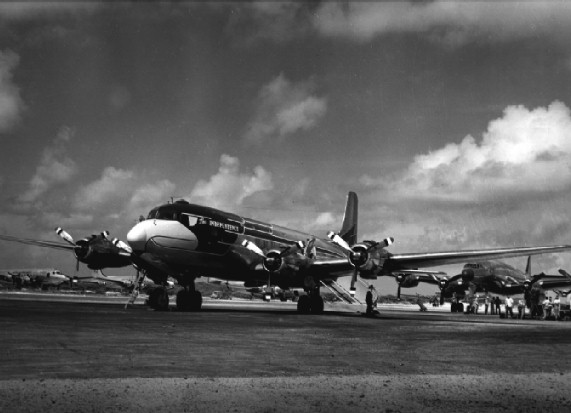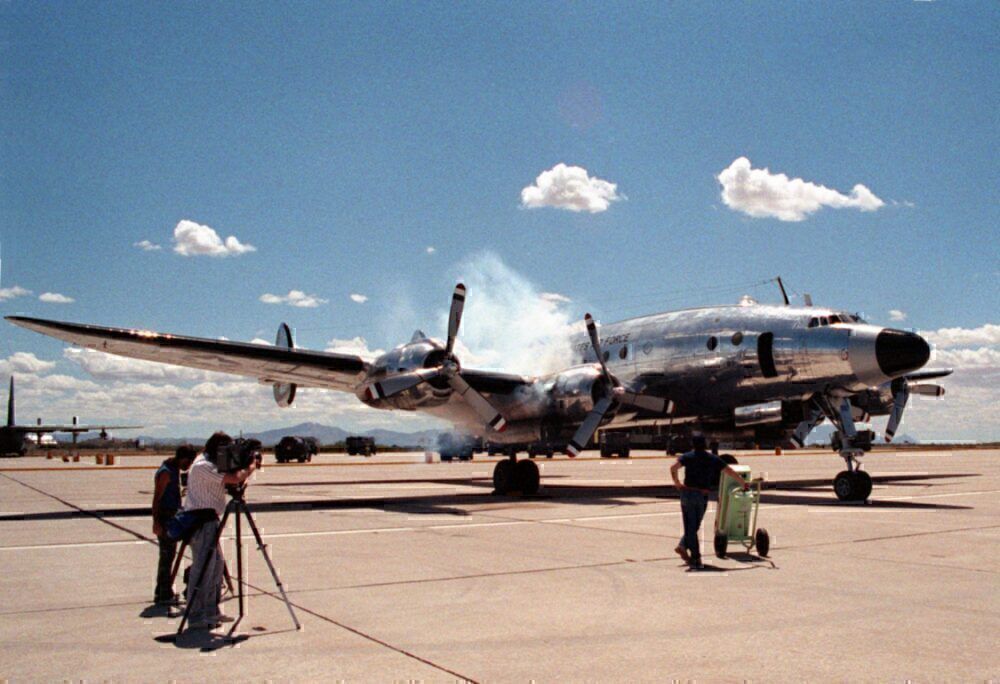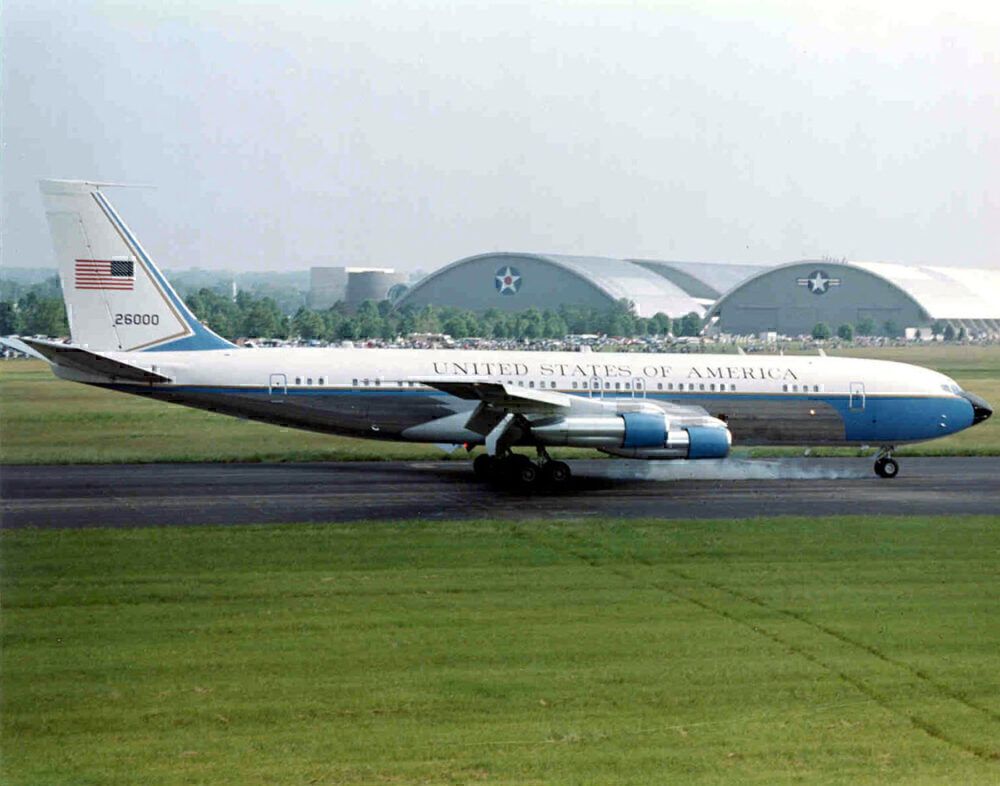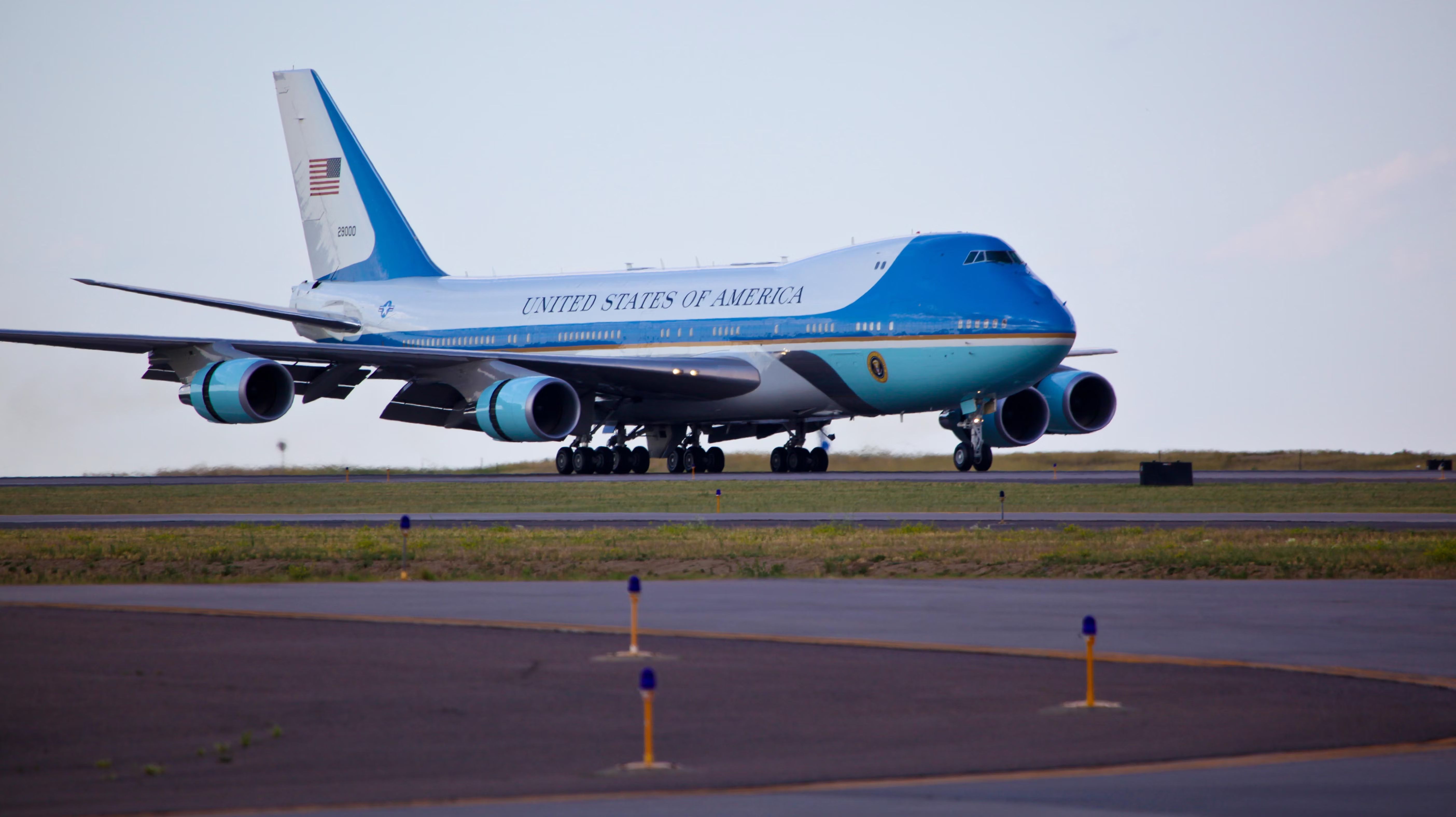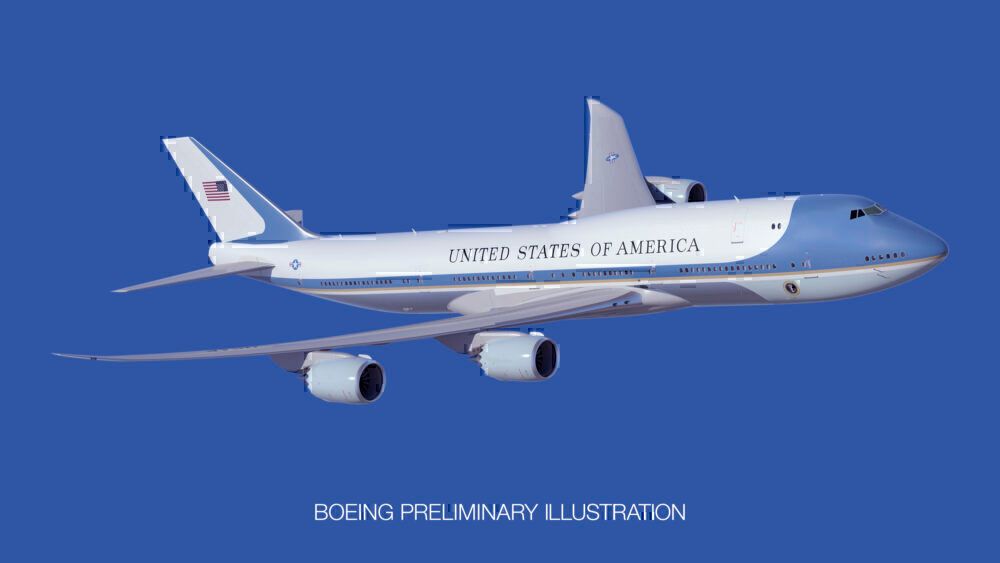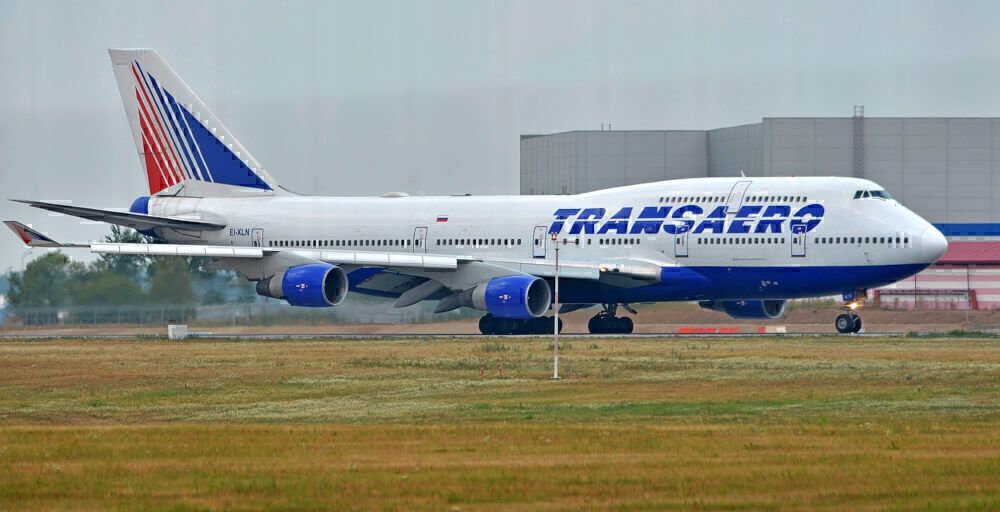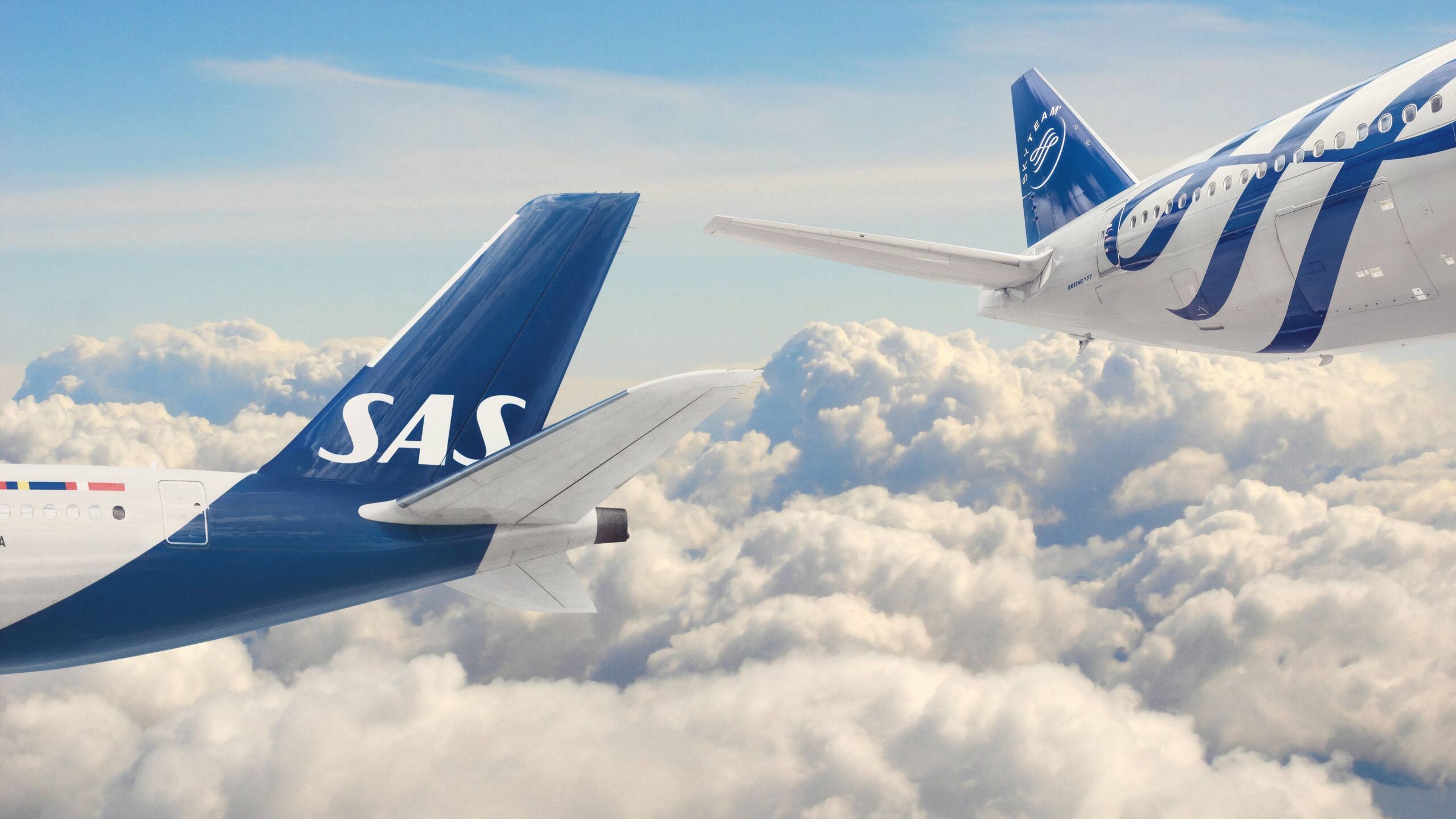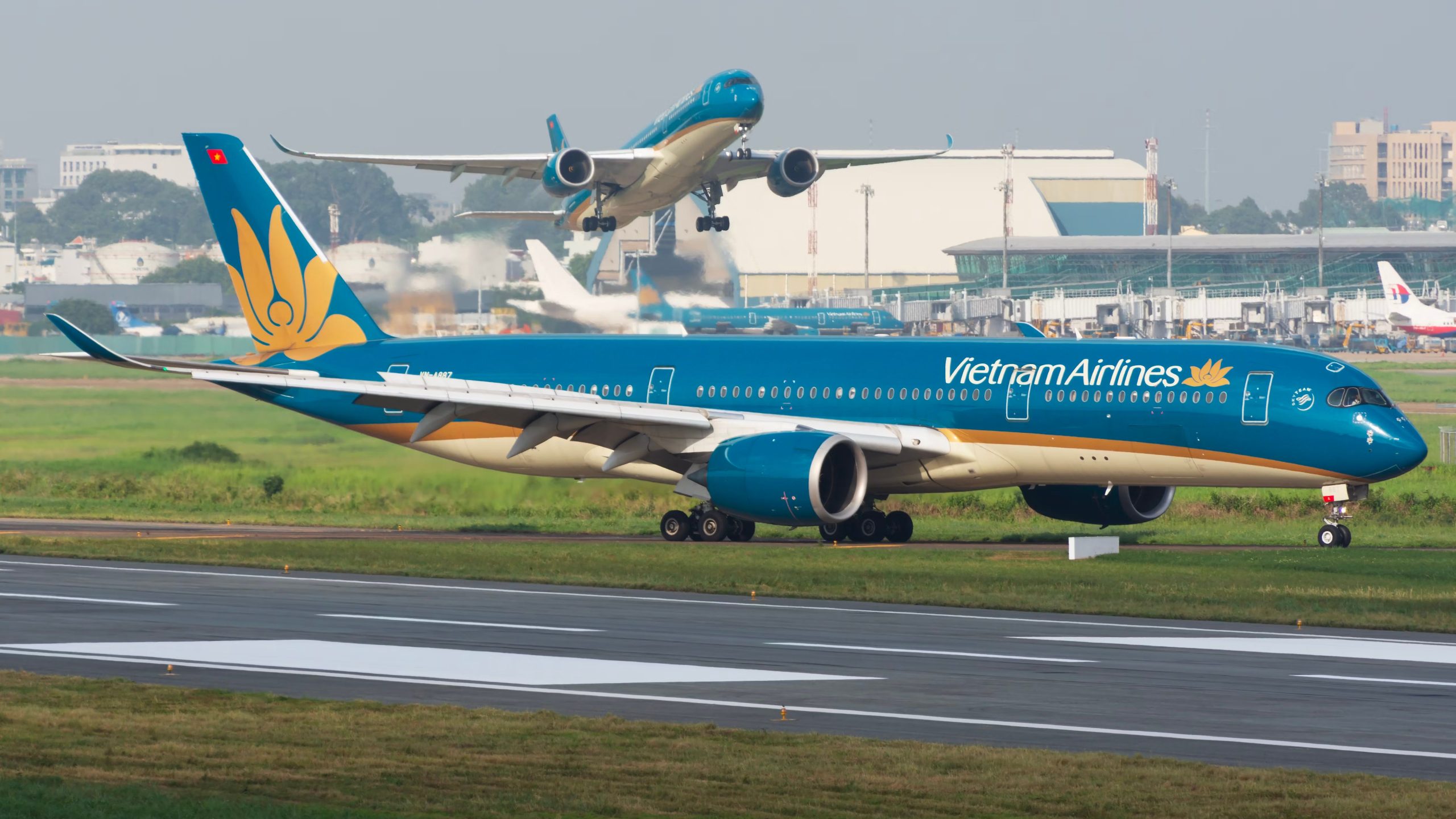We have all seen the blue and white modified 747s that carry the US President. These are known as Air Force One when the President is onboard (Air Force One is the callsign of any aircraft carrying the President). More than just a transport aircraft, the current aircraft are fully equipped offices and residences for the President, with working space for key staff and even an onboard press contingent.
In this article, let’s take a look back at the aircraft that have been used for Presidential transport throughout US history. Furthermore, let’s explore the introduction of the Air Force One callsign and explore the future replacement of the current aircraft with modified 747-8i jets.
Early Presidential aircraft
The iconic blue and white 747s are what we associate with the callsign Air Force One. These were only introduced in 1990, though, and of course, Presidents have been flying long before that.
The first President to take the air was Theodore Roosevelt, although he had left office by that time. In October 1910, he flew at a county fair at Kinloch Field in Missouri as a passenger in a Wright Flyer aircraft. This was only seven years after the Wright Brothers made the first powered flight in a predecessor Wright Flyer.
Before the Second World War, Presidential air travel was rare. Flights, when they did happen, were with commercial aircraft. Franklin Roosevelt became the first serving President to fly, heading to Morocco in 1943 on a Pan American World Airways crewed Boeing 314.
Introducing dedicated Presidential transport
The idea of a dedicated Presidential aircraft operated by the US military came about in 1943. The first proposed aircraft was a modified C-87 Liberator Express aircraft called the Guess Where II. This operated until 1945 and carried several VIP passengers, including the First Lady, but was not deemed safe enough for presidential transport.
The first aircraft that was approved was a modified Douglas C-54 Skymaster, nicknamed the Sacred Cow. It was officially called “The Flying White House” but earned its nickname due to the security surrounding it. President Franklin Roosevelt used this once, in 1945, to attend the Yalta Conference in the Soviet Union, for discussions regarding the postwar situation in Europe.
The Sacred Cow was replaced in 1947 with a C-118 Liftmaster (a military-modified Douglas DC-6 aircraft). This aircraft, known as Independence, was fitted with a stateroom and seats for up to 24 passengers.
Introducing the callsign in 1953
In the years after the Second World War, aviation expanded significantly. Presidential travel was no exception. President Eisenhower introduced several large propeller aircraft for dedicated Presidential travel, and towards the end of his second term in office, he introduced the first jet, a Boeing 707.
The first of these was a Lockheed Constellation aircraft, named Columbine II after the First Lady’s home state flower. Soon after its introduction in January 1953, it became the first aircraft to take the callsign Air Force One. This happened following an incident where Air Force 8610 carrying the President was confused with commercial flight Eastern Air Lines 8610.
Columbine II was replaced after just two years with Columbine III, a Lockheed Super Constellation, and went on to fly with Pan American World Airways. It was stored in 1964 but later restored for Eisenhower’s 100th birthday celebrations in 1989. It was sold to a private company in 2016, which continues restoration work, aiming to restore it to its original appearance.
The first Air Force One jets were Boeing 707s
In 1959, Presidential air travel entered the jet age. It is no surprise that US manufacturer Boeing and the 707 were chosen. It was not the first commercial jet aircraft to enter service (this accolade goes to the de Havilland Comet), but it was the first highly successful one.
President Eisenhower oversaw the introduction of the first jet. This was a Boeing C-137 Stratoliner derived from the Boeing 707 and modified as VC-137 for presidential service. This first aircraft, Special Air Mission (SAM) 970, carried Eisenhower on several overseas trips, including a final tour covering 35,000 kilometers around Asia in December 1959.
The next 707s: SAM 26000
It was not long before the SAM 970 was replaced by an upgraded Boeing 707. SAM 26000, a VC-137C / Boeing 707-353B, entered service in October 1962 under President Kennedy. It served as the main transport for three Presidents: Kennedy, Johnson, and Nixon.
Raymond Loewy, a French-American designer, came up with the blue and white color scheme that defines Air Force One today. Loewy’s career wasn’t restricted to the plane’s livery, however, as he would go on to design the TWA logo and other iconography for BP, Shell, Greyhound and multiple major US railroads.
Some of the main events during SAM 26000’s service include:
- The first Presidential flight in November 1962. It took Kennedy to New York to attend the funeral of former First Lady Eleanor Roosevelt.
- Following Kennedy’s assassination in November 1963, President Lyndon Johnson was sworn in onboard the aircraft before flying back to Washington with Kennedy’s casket.
- It flew Johnson on two extensive tours of Asia and two trips to Vietnam. He was the highest user of the aircraft.
- It underwent a complete refit after Nixon took office in 1969, adding a new suite for his family use (which remains today in the 747s today). Before this, the interior was much more open-plan.
Upgrading in 1972 – SAM 27000
SAM 26000 was replaced by SAM 27000 in 1972. It served seven presidents up to its replacement in 2001: Nixon, Ford, Carter, Reagan, George H Bush, Bill Clinton, and George W Bush.
Some of its main highlights include:
- The aircraft was the first to be fitted with missile defense systems amidst increased terrorism threats in the 1970s.
- Ronald Reagan was the heaviest user. This included three trips to Asia, six to Europe, and one to Russia to meet Gorbachev.
- George H W Bush was the last President to use it as the primary Air Force One. However, it continued in service as a backup aircraft and saw service with the next two Presidents as well.
All three 707s that served as Air Force One have been preserved:
- SAM 970 is on display at the Museum of Flight in Seattle.
- SAM 26000 is on display at the US Air Force Museum in Ohio.
- SAM 27000 is displayed at the Ronald Reagan Presidential Library and Museum in California.
The Boeing 747 VC-25A Air Force Ones
Two 747s replaced the 707s in 1990. Officially named SAM 28000 and SAM 29000, these are modified 747-200 aircraft, with Boeing designation VC-25A.
The two identical 747s were ordered as replacements during President Reagan’s term. The only other proposal came from McDonnell Douglas with a modified DC-10 aircraft. These were completed in 1986, at the cost of $325 million each, and first flew in May 1987. Delays with the interior electronics meant they did not enter service until 1990 after Reagan had passed the office to George H Bush.
Photo: Denver International Airport
They kept the same livery designed by Raymond Loewy for the previous 707s. First Lady Nancy Reagan designed the interiors, apparently to recall her native US Southwest home.
Plenty of special features
The aircraft features plenty of impressive features, including defensive countermeasures to disrupt heat-seeking missiles, technology to jam radar, and extensive communications facilities. The public, however, has only been made aware of a very small portion of the aircraft’s numerous redundancy systems.
While most 747s face the challenge of being limited by range, the modified aircraft that serve as Air Force One are capable of air-to-air refueling. This allows the aircraft to remain airborne for lengthy periods of time in the event of emergencies on the ground.
Inside Air Force One
The VC-25A offers 4,000 square feet of space. It is a true White House in the sky, with sleeping and working space for the Presidential family, a conference room, working and meeting rooms for staff, and a press area.
The upper deck is reserved for the aircraft’s crew. Behind the cockpit are a crew lounge and a full communication center. This handles communication on the aircraft and with the ground as well as many of the aircraft defense systems.
The main deck is for the President, staff, guests, and press. The protocol is that passengers can move aft of their seat location but not forward, as Secret Service agents onboard the aircraft will be sure to enforce.
In the nose of the aircraft is a private suite for the President and his family. This has been a feature since Nixon introduced it on the 747. Behind this suite is the President’s office, with a large chair, desk, and sofas for guests. After the events of September 11th, the technology to address the nation from the office was added (on that day, the aircraft had to land to enable the President to give an address).
Next comes a large medical suite. Air Force One always flies with a doctor and nurse onboard. Along the corridor from here are many offices, including a room for senior staffers and a conference room with eight large chairs. Beyond this are several separate cabins reserved for office staff, invited guests, and (at the rear) press that travel with the President.
30 years of service
Of course, over the past 30 years, the two VC-25A aircraft have flown plenty of domestic and international missions. Some noteworthy flights include the following:
- On 11 September 2001, Air Force One took off with the President shortly after it was clear what was happening. It remained airborne whilst all other air traffic was grounded, landing to refuel and for the President to address the nation before taking off again. It was later explained that there was fear of attack if it landed again at Washington.
- Presidents have invited other leaders to travel with them. This included Nixon taking the Soviet premier Brezhnev with him in 1973. The British Queen and Prime Minister David Cameron have also both been guests in the US.
- The aircraft also traditionally transports the caskets of former Presidents for state funerals. They are placed in the guest area at the rear of the aircraft, a tradition that began when Kennedy’s body was flown back after the assassination.
Replacing the current 747s with the VC-25B
Like many other 747s around the world, the two VC-25A aircraft will soon be retired. The US Air Force requested proposals for three replacement aircraft in 2009. There was initial interest from Airbus to offer the A380, but it pulled out as it believed it would not make financial sense to build the aircraft in the US.
Photo: Boeing
This left just Boeing. After considering the 787 as an option, the 747-8 was chosen, and in 2016, the Air Force confirmed the contract for Boeing, reduced to two aircraft, and with plenty of requests to look at cost reduction options.
Modifying two former Transaero aircraft
As part of the effort to reduce costs, it was announced in 2017 that two 747-8i aircraft originally intended for the Russian airline Transaero would be purchased and modified.
Of course, refitting these will be faster and less costly than building new aircraft, but there is still a lot to do. In 2018, a contract for $3.9 billion to modify these into VC-25B jets was announced. The aircraft was flown to Boeing in Texas in spring 2019 and stripped down. Modification work began in February 2020, with the aircraft expected to be delivered and enter service with President Joe Biden in 2024. Extensive renovations are set to take place, including a new communications center, the addition of medical and catering facilities, and a full interior refit.
A new livery?
Another major change to the VC-25B aircraft could be the livery. Even though Trump never flew on the new aircraft, he was heavily involved in the order and design. In June 2019, he indicated he wanted a change to a new red, white, and blue livery. This would be the first change since the design was released in 1962.
Once these new 747-8i aircraft arrive (hopefully in 2024), what will happen to the current 747s? It is doubtful that they will end up stored in the desert like many commercial 747s currently being retired. Many previous Air Force Ones have been preserved or displayed, and while nothing is confirmed yet, it is likely the 747s will see the same future.
The George and Barbara Bush Foundation has expressed interest in taking one after retirement, potentially displaying it in his library and museum in Texas. Certainly, other former presidents may also be interested in taking possession of an aircraft.
Other Air Force Ones
While the US President’s blue and white 747 is unquestionably the most recognizable among presidential aircraft, plenty of other nations have unique aircraft for their leaders. Let’s finish by taking a quick look at presidential aircraft from around the globe.
Russia uses an Ilyushin-96 (it has eight of them in the government’s aircraft fleet). Four of them are equipped for head-of-state transport. They are lavishly equipped with rugs, tapestries, and even a decent-sized gym.
The Indian government took delivery of a new Boeing 777 in October 2020, with one more due soon. These were the first dedicated planes for use by the government and the Prime Minister, who previously flew with Air India. Like the US Air Force One, they are equipped with extensive communication, defense, and radar jamming technology.
Germany replaced its aging Airbus A340 government aircraft with the A350 in 2020. The modern long-haul jets featured a new cabin with extensive office and meeting space.
The UK Royal Air Force operates an Airbus A330 for use by the government and the Prime Minister. It also serves as an air-to-air refueling aircraft. It is significantly less extravagant than Air Force One, as it was fitted out with business-class style seating by Prime Minister David Cameron, but has no suites or extensive office space!
Five of the World’s Most Luxurious Presidential Aircraft
But unsurprisingly, the most lavish aircraft flown by heads of state are those owned by the monarchs of oil-rich nations. The Sultan of Brunei operates a private 747-8i that has been dubbed the “Flying Palace,” and the Royal House of Saudi Arabia owns and operates the world’s only private Airbus A380.
Nonetheless, Air Force One, over the years, has likely been the most expensive aircraft operated by a head of state. With extensive redundancy systems and one-of-a-kind modifications, the jets that fly the US President across the globe are truly unlike any others.
Would you like to share any facts or comments about US Presidential transport or any of the Air Force One aircraft? Let us know in the comments.
